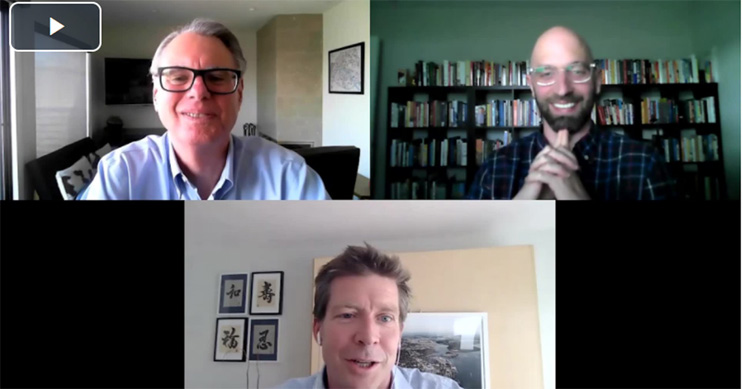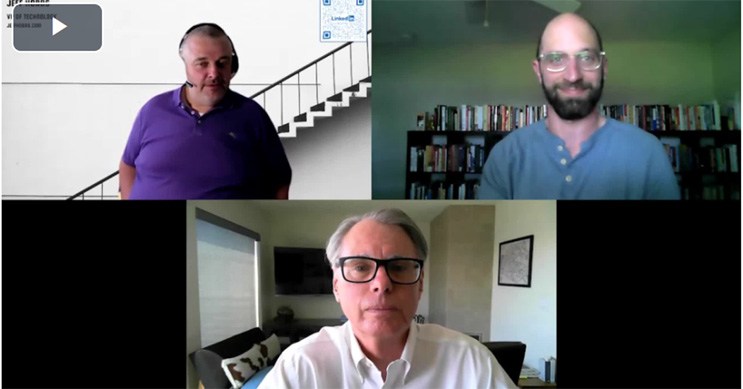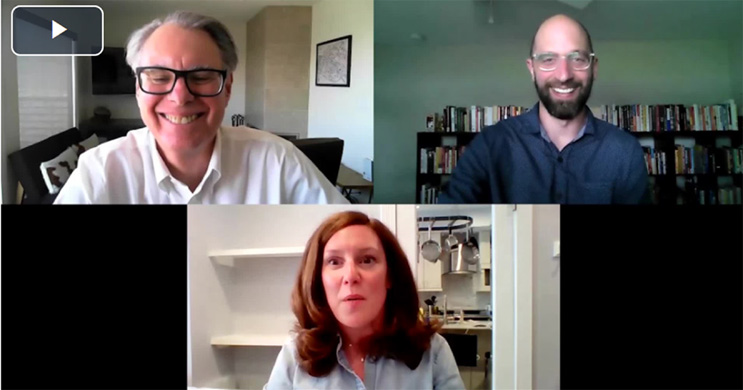Telling Water's Story; Selling Your Story
By Jim Lauria and Adam Tank

Why good storytelling is important for improving the state of municipal water service.
If long sales cycles give you nightmares, the water industry will ensure you never sleep.
Long utility planning discussions make 12- to 24-month sales cycles. Regulated rate structures and budgets can delay a deal by years as the utility and manufacturer wait for funds to become available. And communications behind the transactions can be challenging as understaffed utilities get frustrated by a parade of new salespeople whose companies and their quarterly focused executives don’t have the patience for.
But there are great opportunities for successful selling in the municipal/utilities market. At the heart of those opportunities is telling water’s story. Good water storytelling helps manufacturers position their product, sell the benefits, and serve the customer. But it goes much further. Good water storytelling in the sales process helps the utility explain to regulators and ratepayers why your product — and theirs, water itself — is so important. It could help shake loose funding from government and build support within the regulatory chain. And good storytelling can generate enthusiasm among the public about technologies a utility is adopting (as long as the story is easy for a layperson to understand).
The bottom line is that telling water’s story helps build the public’s perception of the value of water. If people don’t value water, they don’t support budget allocations and rate increases to pay for better technology.
“Water plays in this weird space in our lives where it’s a right,” says Reese Tisdale, CEO of Bluefield Research, who was a guest on the Water We Talking About? podcast on June 28, 2021. “I think people expect it, but also people think that distribution and supply are free, and the infrastructure is free, which it is not.”
Adding to the challenge, says Tisdale, is that the water industry tends to be invisible to most of the public.
“It’s ‘out of sight, out of mind’ for most people, so the water industry as a whole kind of operates in the shadows,” he notes.
Our job in the water industry is to bring the process out of the shadows and explain what’s behind the water in the tap — to increase the perception of the value of water and to provide the products, services, and support that help utilities source, treat, and deliver that water.
Through our Water We Talking About? podcast hosted by Water Online, we have a unique opportunity to talk with some of the best storytellers in the water industry and share their insights with listeners. In conversations with three leaders in the business, we distilled several key lessons that can be applied to selling in the municipal/utilities market.
Tisdale’s perspective, informed by his analysis of the water industry, on the challenges of telling a highly technical story is the first major lesson.
Jeff Hobbs, former vice president of technology for San Jose Water and our Water We Talking About? guest on May 26, 2021, points out that utility staffs tend to be extremely small and extremely busy. His department had 25 employees handling the technical needs of a utility that serves about 235,000 customers.
“That’s a pretty small department for what we’re trying to handle,” Hobbs told us. “I wanted to be able to trust my contractors, my vendors.”
Hobbs points out that building that trust could be difficult, especially when forced to continually tell his own story to new salespeople — and that was doubly problematic when those salespeople didn’t do their homework before calling on him.
“We think it’s a public agency, but in many cases it’s a public company that’s very heavily regulated,” Hobbs explains (as he had to do countless times to green salespeople calling on him). “Just a hint: Oftentimes an investor-owned utility will have the word ‘company’ in its name. And a company almost always means that it’s not an agency in the public sense.
“Go online. Just look at the website,” he urges. “Do an ‘About the Company’ type of thing. If someone’s just, ‘Hey, I know you’re on the NYSE,’ that’s like, ‘Alrighty, you’ve done at least some research. That’s already a step up on more than 95 percent of the people I’ve talked to.’”
How Your Customer Makes Money
Use some of that research time to determine how your client makes its money. With utilities, it may not be as simple as just taking a margin on sales.
“The vast majority of the business model from a private water utility is capital dollars — the utility is granted an authorized rate of return — every three years, at least in California; you can earn this much on this amount of capital dollars,” Hobbs explains.
So where does your story fit into that? Investing in your technology or service could be part of your customer’s profit picture — but only if you time your pitch and transaction right.
You’ve got to know what your customer’s budgeting and rate case cycle is. If you miss it today, you may be on the bench for the next several years. That’s years of trying to keep on your customer’s radar (and keeping your sales manager at bay).
“So you may have a great discount offer for a signature this year, but you may be two years too early,” Hobbs notes.



Another Key Audience: Government
While you’re working your way through your municipal or utility customer’s budget cycle, you could be doing him or her a favor by telling water’s story to public officials. The more elected officials and agency staffers understand the importance of your solutions, the more support your customer is likely to get when it comes to allocating grants and support.
Mae Stevens, vice president and chair of water practice for Signal Goup in Washington, DC, is a go-to lobbyist for the water industry and was our podcast guest on June 14, 2021. She pointed out that we’re fortunate to have some officials — like U.S. EPA Principal Deputy Assistant Administrator for Water Radhika Fox, former CEO of the Water Alliance, who understands water and the water industry. But there are many others who, like the rest of the public, just haven’t heard our story yet.
“People in Washington don’t understand what you need — anybody, whether it’s water or any other sector of the economy — unless you tell them,” Stevens says. “They don’t know what you want unless you ask for it.”
Just as important, we need to understand their story, too, just as we need to understand our customers’ stories.
“If you are in the water sector, you need to understand what’s going on in Washington because it has a really significant impact on what you do back home, wherever you are,” Stevens says.
Stevens emphasized that telling your story in Washington (and we can make the parallel at the state level) is a process, too. Your first call is going to end up at the desk of a young intern, who can pass your message to a legislative aide, who can ultimately deliver your perspective to the representative or senator. Over time, a pressing story can evolve from a message to an issue to a policy to a piece of legislation — and you can build a relationship with your elected representatives and their staffs as a valuable resource for understanding what’s happening at ground level.
When change happens, when allocations are made, when a new system is installed to benefit ratepayers, it’s time to tell the public what happened. Make sure the public knows how its water system just improved, and be sure to thank the officials who helped make it possible, notes Stevens.
Thanking the public fuels the careers of elected officials. If they do you a solid, make sure you return the favor.
Allies Provide Consistency
Telling your story over time — and through different levels of government or a customer’s organization — can be a challenge, especially when sales teams are often training grounds for rising stars who get shifted frequently to new roles.
Look for representatives who can be your allies. Trade associations are an outstanding place to unite with others in the industry to zero in on messages and deliver your story from multiple angles to government and prospective customers. On a more company-focused level, team up with manufacturers’ reps for equipment or value-added resellers for software. Those organizations tend to have salespeople who stay in their positions for years, building trusted relationships with their customers — your customers. They see all aspects of the utility’s operation, so they can present your product or service in context and at the right time in the procurement cycle. And they have expertise not just in your technology but also the technologies around it. In all, it’s a perfect setup to tell a great story.
Tell Your Story — Loud
When it comes to selling to municipalities and utility companies, start with your story. Distill your messaging and keep it consistent. Learn your customer’s needs not just in terms of technology, but in terms of timing, too. Use your story to help your customer gain the support of government and the public, celebrate the wins, and ally yourself with others who can help tell water’s story.
“I think ... for significant change to happen … it takes leadership, and it takes a sponsor within the organization to do it,” says Tisdale.
Be that leader. Be that sponsor. And turn the water story into the story of your sales success.
About The Authors
 Jim Lauria is vice president of sales and marketing for Mazzei Injector Co. LLC, a fluid design company that manufactures mixing and contacting systems. He has been a water technology executive for over 20 years, with global experience in the agricultural, municipal, industrial, and commercial markets. Lauria holds a Bachelor of Chemical Engineering degree from Manhattan College. He and Adam Tank co-host Water We Talking About?, a podcast sponsored by Water Online. You can contact him at jlauria@mazzei.net.
Jim Lauria is vice president of sales and marketing for Mazzei Injector Co. LLC, a fluid design company that manufactures mixing and contacting systems. He has been a water technology executive for over 20 years, with global experience in the agricultural, municipal, industrial, and commercial markets. Lauria holds a Bachelor of Chemical Engineering degree from Manhattan College. He and Adam Tank co-host Water We Talking About?, a podcast sponsored by Water Online. You can contact him at jlauria@mazzei.net.
 Adam Tank has over 10 years of experience in the water industry with a focus on business development, software, and innovation. As the director of software solutions at Transcend Water, he has responsibility for client success related to Transcend Design Generator Software, a tool that helps water OEM’s and engineering firms streamline their conceptual design practices. Tank received his undergraduate degree from Kansas State University and his MBA from the University of Arizona. You can reach him at atank@transcendh2o.com or on his personal site, www.adamtank.com.
Adam Tank has over 10 years of experience in the water industry with a focus on business development, software, and innovation. As the director of software solutions at Transcend Water, he has responsibility for client success related to Transcend Design Generator Software, a tool that helps water OEM’s and engineering firms streamline their conceptual design practices. Tank received his undergraduate degree from Kansas State University and his MBA from the University of Arizona. You can reach him at atank@transcendh2o.com or on his personal site, www.adamtank.com.
